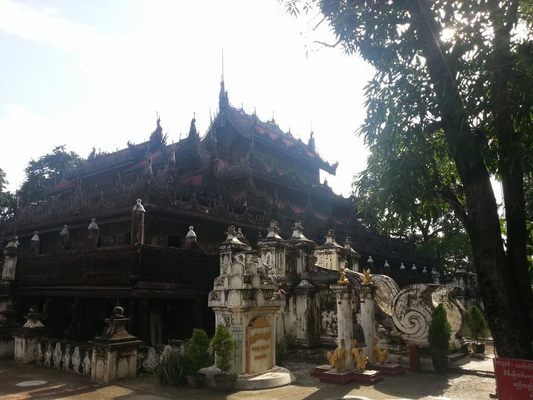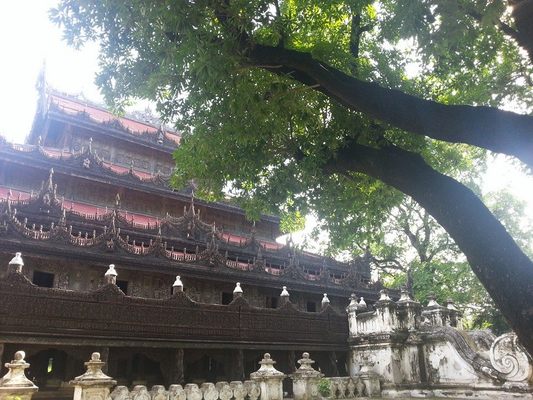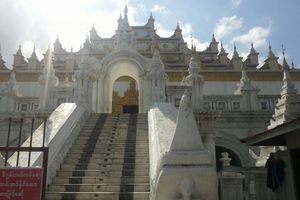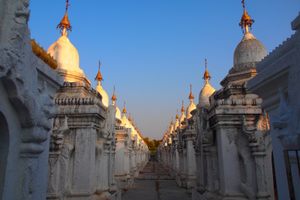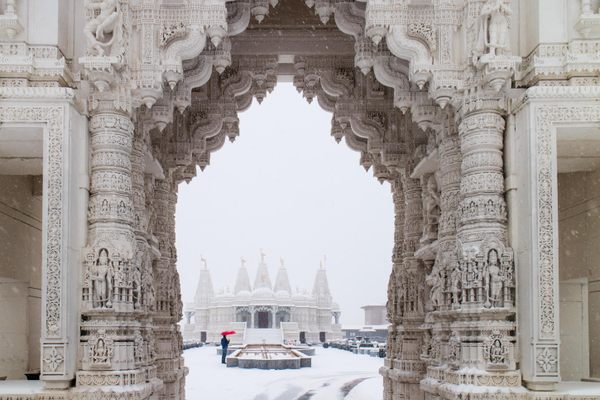About
The Shwenandaw Kyaung Temple, or Shwe-Kyaung-pyi as it is known to the Burmese, is the most significant of Mandalay's historic buildings, due to the fact that it is the sole remaining structure of the former wooden Royal Palace that was built by King Mindon in the mid-19th century.
It was originally part of the royal palace complex in Amarapura, but was subsequently moved to Mandalay, where it became known as Mya Nan San Kyaw. Following its move, it became the northern section of the Glass Palace and also part of the king's royal apartments. It would also be the final home and resting place of King Mindon, who died in this structure in 1878.
King Mindon's son Thibaw, who succeeded his father following his death, often used the building as meditation grounds, but became convinced that his father's spirit still haunted the grounds, so he immediately ordered the building to be dismantled and removed from the Royal City.
Over the course of the next 5 years following its dismantling, the building was reconstructed as a monastery and dedicated as a work of merit to the memory of King Mindon.
During the latter stages of World War II, the rest of the old Royal Palace within the old Royal City burned as a result of allied bombing of the Japanese encamped in the old Royal Palace. Due to King Thibaw's superstition and relocating of the building, he had preserved a significant remnant of the Royal Palace.
Related Tags
Know Before You Go
Entrance to Swenandaw Kyunag is included with the Mandalay Archeologic Zone combo ticket, which also includes Atumashi Kyaung, Cultural Museum Mandalay, Kuthodaw Paya, Maharani Paya, Mandalay Palace, Paleik Paya, Mandalay Palace, and the ancient cities Amarapura and Inwa.
Community Contributors
Added By
Published
February 20, 2012






